You are here
Mosques of East Kazakhstan.
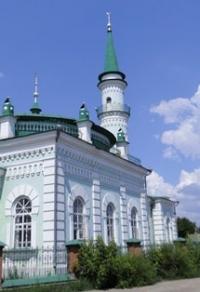

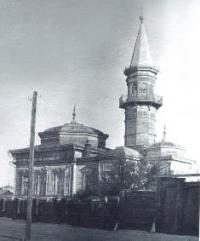
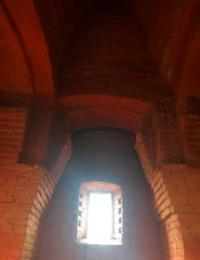
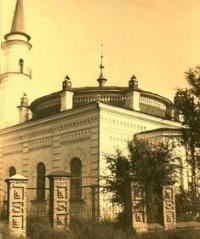
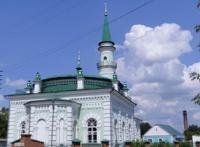
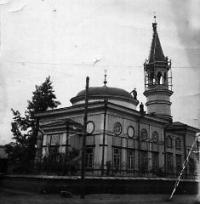
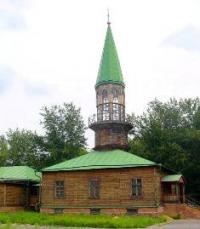
Corporate travel policy in Kazakhstan.
“Travel is fatal to prejudice, bigotry, and narrow-mindedness, and many of our people need it sorely on these accounts. Broad, wholesome, charitable views of men and things cannot be acquired by vegetating in one little corner of the earth all one's lifetime”
Mark Twain.
Excursion trip from Almaty to Astana.
The arrangement of East Kazakhstan in the center of the Euroasian continent caused penetration and distribution from antiquity in its territory of a number of world religious doctrines: Christianities of Nestorian sense, Buddhism, Islam.
As these doctrines there were people with nomadic economic way, practically any monument, excepting archaeological, connected with religious belief ancient our edge did not reach so far. One of archaeological monuments - the monastery fortress Ablayikit relating to an era of the Dzungarian dominion.
About its architectural art advantages we can judge only by the remained drawings of researchers, travelers and geographers. Now only bulk defensive shaft and the bases of once grandiose constructions remained: the temple and the room for priests, and also fragments of a stone laying of walls.
Distribution of orthodox Christianity, the foundation for which it was laid by the first Russian settlers - inhabitants and defenders of Priirtyshye fortresses was the considerable phenomenon in a modern history and culture of East Kazakhstan.
Process of Christianity of edge covers quite considerable interval of time - since 20th years of the XVIIIth century and, finishing the 10th years of the XXth century, that is about two hundred years. Together with Christianity the orthodox architectural traditions which exerted huge impact on Muslim architecture both in civil administrative, and in cult construction came to the region.
The main not Christian population of the cities of Priirtyshye in the modern East Kazakhstan region were Siberian and, the Kazan Tatars making a considerable part of the population of Semipalatinsk where the large area called by the Tatar part compactly populated with representatives of these people was formed.
Big groups of Tatars were available in Ust-Kamenogorsk, Pavlodar and Zaysan. Private structures of Muslims of Tatars it is, not enough, than differed from similar constructions of Russians. Differences were mainly expressed in decorative finishing of facades of buildings and some features of arrangement of the economic territory, adjacent to a residential building.
But, if civil building, as a rule, within separately taken region practically always had the general, despite of a national variety, then cult constructions, in most cases, have brightly shown original lines. So, for example, in the presence in the settlement of the Armenian or Jewish quarters, the prayful buildings which are available there have the architectural lines characteristic of culture of these people. It is necessary to distinguish the Armenian temple from a Catholic church or the Russian church.
The Jewish synagogue is also rather brightly expressed, excepting the details speaking only about a construction era, architectural tastes of this area, material resources do not merge visual perception with temples of the adjoining religious groups.
Individual traits are inherent also in any mosque. Hardly it is possible not to distinguish a minaret from a belltower. But, at all distinctions between the mosque and Orthodox church, architectural appearance of the last, in the huge territory of Siberia and Kazakhstan to a great extent affected on external and an interior of the first.
To that it is a lot of examples. Let's consider the remained monuments of Islamic cult architecture of the East Kazakhstan region. First of all it is four Semipalatinsk mosques: two wooden (one of them the oldest in the city - Tynybaya) and two stone (brick - One-minaret and Two-minaret). The Tatar mosque in the city of Zaysan remained (deprived of the initial knob - a dome and a minaret).
The only escaped monument of Muslim cult architecture in rural areas, is the wooden mosque in the tiny aul of Akkol of Beskaragaysky district. This architectural monument, unique for our area, is on the verge of destruction.
At all variety of decorative finishing, all these mosques are united by unity of the plan (except the Akkol mosque), and also functional purpose of the separate operated parts. Particular interest is attracted by big similarity with Orthodox churches.
This similarity is clearly visible both by comparison of plans of buildings, and in the analysis of external and internal designs during which creation the receptions similar to the Russian traditions were used. The matter is that, at construction of the majority "Sibir Tatar" mosques the principle of "planting" on one "axis" of different-sized volumes, such as was used.
The minaret room - similar to orthodox space; the room of corridor character, smaller on width, - the Russian temple similar to a refectory part; the main volume - i.e. the hall for praying and, at last, niches of a mikhrab, not to destination, but in a form close an altar to a ledge of church.
A difference only that as it was already told above instead of a belltower - a minaret and, the direction of a mikhrab not on the East, as at Orthodox church, and towards Mecca - the city, sacred for Muslims. The fact that in some cases people whose confessional accessory did not coincide with accessory of a constructed facility were the main participants of construction of mosques and temples is interesting.
So, for example, the Semipalatinsk architect Alexander Bolbotov, adapted to local conditions the project of capital guard of the Egersky regiment in St. Petersburg of Mironovsky church and, created Voskresensky Cossack church, in the same years (the middle of the XXth century) developed the project of the Two-minaret mosque (silt. 1, 2) also realized it.
One of sources indicates that the project of this construction was developed by the academician of architecture Skarzhinsky, most likely, as well as in a case with the "tonovsky" Voskresensky temple, Alexander Bolbotov was the main hero of construction of the mosque.
Even fluent acquaintance to an interior of the Two-minaret mosque allows to judge striking similarity of details of registration of the mentioned buildings. During the described period the government of the Russian Empire especially needed creation of national harmony in the country, or at least its visibilities.
Improvement of a situation in the state which from time to time pursued policy of open persecutions for believers was one of tasks. So, for example, in the XVI - XVII centuries mosques in Siberia and the Volga region collapsed (in the Kazan province in two years 418 mosques were demolished, only 118 are kept).
A little later in Russia Mohammedan Spiritual Management appears owing to what the regulated construction of mosques begins. "In the 19th century spiritual managements of all gentiles of confessions submitted to the Government to the Synod.
Special Synod department developed standard projects, both Orthodox Christians, and gentiles of cult buildings. No wonder therefore that the architecture of mosques and orthodox churches had a uniform composite basis".
Influence by the regulated Russian of architecture in mosques of Semipalatinsk is traced not only in character of the plan, but also in classical processing of walls by pilasters, circular windows. But, at the same time, in some cases also traditional lines are kept.
Many-sided forms of minarets with circular balconies around them for the muezzin and, it is represented especially important, the dome covering which from old forms came to architecture of mosques. For example, Turks Ottomans adopted this form from Turks of the Seljuks in the XVIth century.
It is possible to say that in this case the type of the "official" stone Siberian Tatar mosque which is successfully connecting the principles of creation of Muslim and Christian cult constructions is carried out. Points out its name accepted in the Soviet literature feature of the oldest brick Semipalatinsk mosque: Two-minaret.
Really, existence of two harmonious minarets favourably distinguishes this building from other similar constructions of the city. Minarets "are not delivered" on to back of church, and are on its edges, being the additional connecting element from "refectory". back of church - the cube extended up finished two steps by eaves and a dome.
Unfortunately, now, perception of the given mosque in connection with replacement of a historical fencing new worsened, discords both with the mosque, and with the ancient building surrounding the mosque. Construction of a new fencing is connected with expansion of the territory, adjacent to the mosque.
One more negative moment is the latest structure which is unsuccessfully entered in this architectural complex in particular and, in a city landscape in general. Other bright example of the Siberian Tatar style on the earth of East Kazakhstan is the Semipalatinsk mosque Tynybaya, the oldest in the city (silt. 3) It was constructed in 1834 in a area Over the river, on the left coast of Irtysh, by the Kazakh elder Tynybayem Kaukenovym.
The building wooden, but in the forms reminding the similar brick constructions built by already described principle of "planting" to the imagined axis of different-sized parts. The city monument of Semipalatinsk, the third on chronology, - the big cathedral mosque belongs to the middle of the XIXth century, is registered at No. 7, constructed in 1852 at the expense of parishioners (silt. 4) It is the only, remained so far wooden mosque of a right-bank part of Semipalatinsk.
Joy of a meeting with this monument is supplemented by the remained building of the Tatar part of the city on Irtysh - the rare occurence presently - an era of mass destruction of old times. At last, fourth Semipalatinsk mosque - One-minaret, it was constructed in 1908 - 1910.
The architect from the Ottoman Empire Gabdulla Efendi directed construction, with the active help of the gifted architect Bayazit Satbayev, famous in Priiryshye. On this place in 1837, at the expense of the Kazan Tatars the wooden mosque which was registered at No. 3 was built.
On May 13, 1902 there was a fire which destroyed this plastic and expressive building. The new mosque was not a wooden construction, and is executed from a stone (a local brick).This beauty who remained so far, practically without changes the mosque nowadays got new color scale - walls are painted by the green color which extraordinary brightly distinguished snow-white details of decorative finishing of the building.
It is necessary to establish the fact that process of destruction of a historical environment of the mosque continues with bitterness. Besides, outdoor constructions spoiled a view from the most interesting point. Despite a considerable chronological difference with three previous mosques, in general, this monument is sustained in the same architectural traditions (silt. 5, 6).
Approximately in forty kilometers from Semipalatinsk there is a tiny settlement - the settlement of Akkol. From far away the attention is drawn by a fancy silhouette which on closer examination appears the wooden mosque which is beautifully entered in a surrounding landscape (silt. 7).
The village of Akkol is founded as the Tatar settlement in 1812, and, by the beginning of the 20th century contained more than 50 houses. The mosque was under construction from 1905 to 1907 Fazylbekov Sultangaly Nigmatullovich together with a community of the believing Muslims.
As well as the Semipalatinsk mosques, akkolsky it was created as the Siberian Tatar constructions. The stone for "pillow" of the base was delivered from Cossack the village Dolonskoy. The brick was made in Semipalatinsk by the Tatar industrialists, the wood was got in a nearby pinery.
Metal products (a roof, drainpipes, shod nails and other metal accessories) were made by the Tatar smith. Uniqueness of the building is that now this only thing the building of the rural mosque of pre-revolutionary construction which remained in the East Kazakhstan region.
Unfortunately, its current state is very deplorable. The monument is thrown. Window frames are lost, almost completely there is no iron roof of the main part of the building. Rather well only the covering of tent end of a minaret and a mikhrab remained.
Nevertheless, the mosque keeps integrity of the perception so far. At last, the last in this list, but not the last on value a monument of Islamic cult architecture in the territory of East Kazakhstan is the mosque of the city of Zaysan (silt. 8).
This monument is as if torn off from the others geographically - all mentioned are concentrated before in Semipalatinsk and its vicinities, and this is far in the south of the area. But, range of distance did not affect the art image of the mosque in Zaysan which acquired the main lines of the of "northern sisters".
In general, the architectural appearance of Zaysan developed thanks to tireless creative activity of the Kazakh gifted architect Bayazit Satbayev (1870 - 1954), the participant as already earlier it was told, constructions of the One-minaret mosque in Semipalatinsk.
On its projects and, with its direct participation practically all considerable civil, administrative and cult constructions of Zaysan were constructed. Among the last - the St. Nicholas orthodox Cathedral and the mosque.
In that and in another cases Bayazit Satbayev realized standard projects - as military church which numerous analogs appeared during this period across all Russian Empire at military units, and the mosque differing in details from other, but belonging all besides to the "Siberian Tatar" style.
The mosque is built by request of the local merchant-cattle dealer Ulken-Kazhy Bekchentayev in 1909. For construction of the Zaysan mosque bricks were produced at the brick-works of Akhmetzakiya Akhtyamov which were in the village the Camp (later state farm of Michurin.
In the years of persecutions on religion from the Soviet power the mosque was closed. In the 1920th years the main vertical detail of the building - a high harmonious minaret - was destroyed by local activists of "The union of militant atheists".
In the 1950th years in the building the Kazakh theater was placed. In 1959 during the fire the dome burned down. Till 1976 the former mosque was under authority of regional department of culture. In the plan the building represents the extended rectangle focused on the southwest.
The mosque - a one-storey brick construction on the tape base. The high socle is allocated with a ledge, it plaster cement mortar. The roof is staled. Besides large, multidimensional plastic gives to facades rhythmical on the small niches, pilasters and ledges executed by release of a brick.
Squared window openings are issued in the top part by the solar elements having decorative and symbolical value. Now the Zaysan mosque is one of the best samples of Islamic cult architecture of the beginning of the 20th century in the territory of the area.
Despite it, it is in extremely unsatisfactory state. The owner is the District Department of Internal Affairs (the club room). When carrying out partial repair of the building a part of walls appeared "under a fur coat". Only fragmentary the initial bricklaying remains.
It was already told about loss of a tower of a minaret and dome. The building interior is completely altered. It is necessary to add that Bayazit Satbayev creativity possesses one more surprising monument - Zeynulla mausoleum built in 1925 in the Chilikty valley well-known for the Scythian barrows (silt. 9).
The mausoleum has in the plan the pronounced form of a cross - the unique phenomenon for a Muslim construction. Besides, in general, мазар in the architectural forms obviously reminds the Russian chapel or the small rural temple.
It is the latest work of the master on the native earth which he was forced to leave. So it developed that for most of the former customers it built new constructions - inhabited and trade, but, already in the territory of China.
Thus, the Russian orthodox construction traditions considerably exerted the impact on Islamic architecture of the Russian Empire in general and, the Kazakhstan Priirtyshye in particular. Unfortunately, now, at active revival of spiritual traditions, equally Muslims and orthodox Christians do not use traditional architectural forms.
Different style, poor art quality of new constructions, their bad taste as if emphasize nobility and stylishness of absolutely already few monuments of the past on the earth of East Kazakhstan.
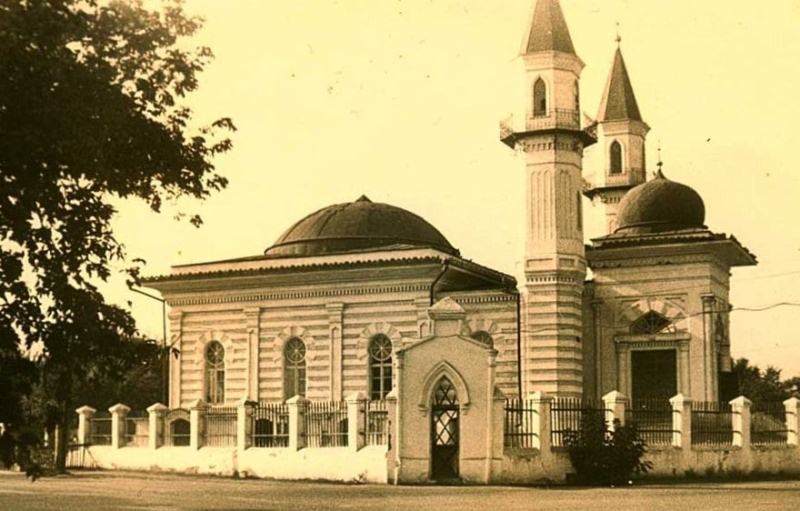
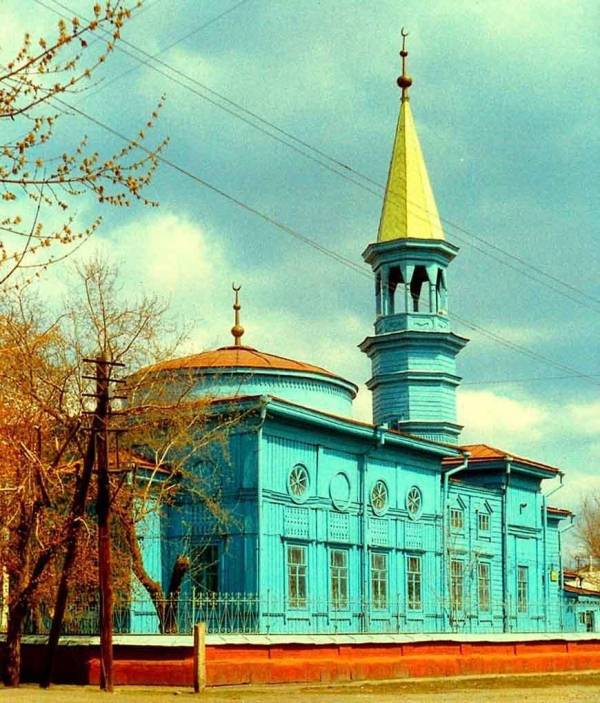
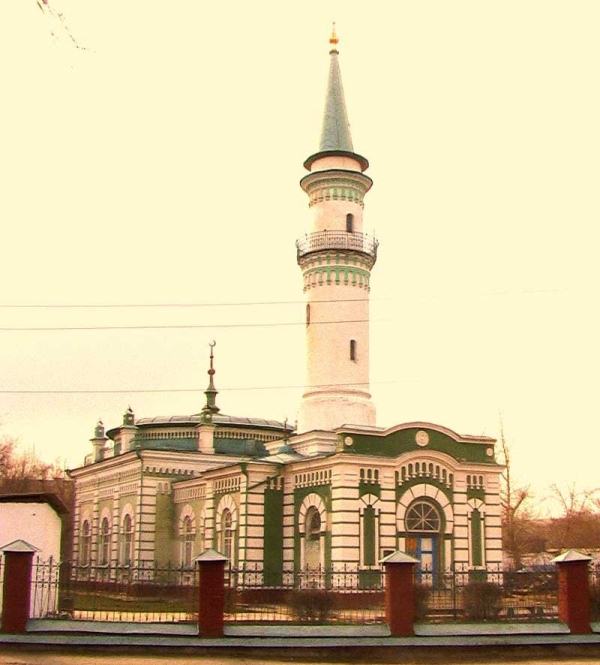


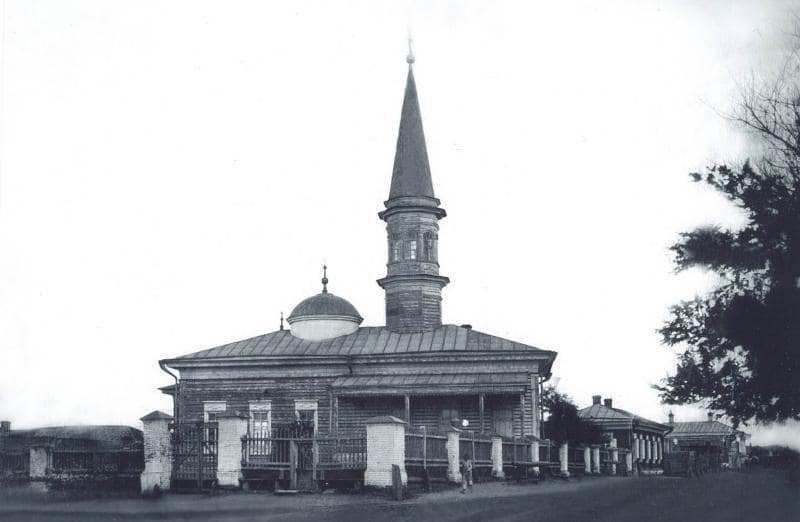
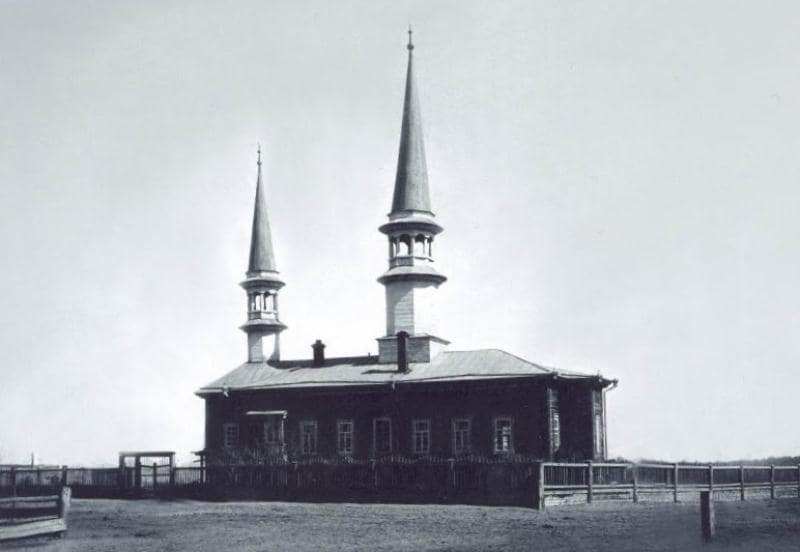
Authority and photos:
Larionov Mikhail Mikhaylovich managing the sector of history of religion, VKO architectural and ethnographic and natural and landscape memorial estate, Ust-Kamenogorsk. http://etnografiavko.kz/etno8_files/liter4.html
Some photos by
Alexander Petrov.







